What to see in Turin, Italy
What to see in Turin?
If you're wondering what to see in Turin, you're in for a real treat. This elegant northern Italian city is one of Europe's best-kept secrets, offering an incredible blend of royal history, world-class museums, and some of the finest food you'll ever taste. Turin isn't just another pretty Italian city – it's a place where you can walk through centuries of history while sipping on Italy's best coffee and chocolate.
Located in the Piedmont region of northwestern Italy, Turin sits beautifully at the foot of the Alps, about 125 kilometers southwest of Milan. The city's strategic position makes it easily accessible from major European cities, and you'll find yourself surrounded by stunning mountain views that create a dramatic backdrop for your urban adventures.
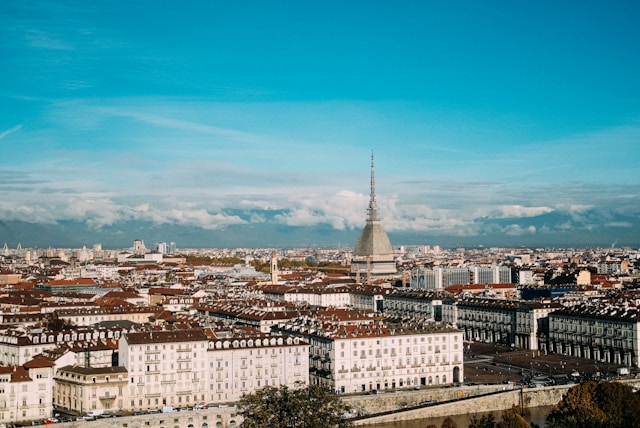 Turin
Turin
What to see in Turin
Getting to Turin is surprisingly straightforward, and you've got several excellent options. Turin Airport (Caselle) is just 16 kilometers from the city center, with regular flights from major European cities. The SADEM bus service connects the airport to the city center in about 45 minutes, or you can take a taxi for around €30-40.
If you prefer traveling by train, Turin's Porta Nuova station is well-connected to Italy's high-speed rail network. You can reach Turin from Milan in just two hours, from Rome in about four hours, and from Paris via high-speed TGV in under six hours. The train journey through the Alps is absolutely spectacular, so don't miss those window views.
For those driving, Turin is easily accessible via major highways from France, Switzerland, and other Italian cities. The city has good parking facilities, though like most Italian cities, the historic center has limited traffic zones, so check your hotel's recommendations for parking.
Now, let's talk about what makes Turin truly special. The city served as Italy's first capital from 1861 to 1865, and this royal heritage is evident everywhere you look. The House of Savoy left behind an incredible collection of palaces, museums, and architectural treasures that'll keep you busy for days.
The Mole Antonelliana is Turin's most iconic landmark and absolutely tops the list of what to see in Turin. This towering 167-meter structure was originally designed as a synagogue but now houses the National Cinema Museum. Take the panoramic elevator to the top for breathtaking 360-degree views of the city and the Alps – it's truly unforgettable.
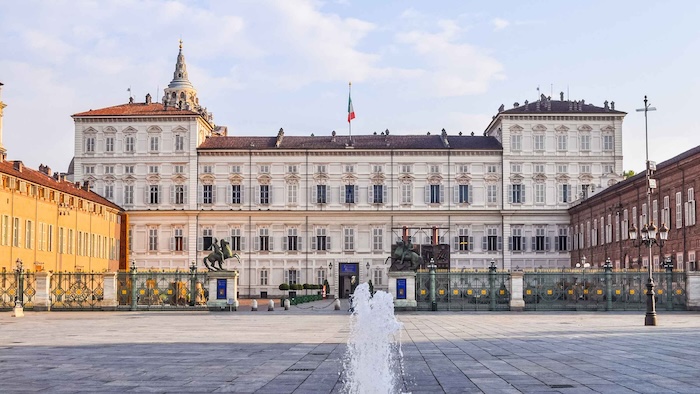 The Palazzo Reale in Turin
The Palazzo Reale in TurinThe Royal Palace (Palazzo Reale) is another must-visit attraction that showcases Turin's royal past. The opulent rooms, stunning frescoes, and the incredible Armory will transport you back to the days of Italian royalty. Don't miss the beautiful gardens behind the palace, perfect for a peaceful stroll.
Right next to the Royal Palace, you'll find the magnificent Turin Cathedral (Duomo), home to the famous Shroud of Turin. While the actual shroud isn't always on display, the cathedral itself is beautiful, and the museum provides fascinating insights into this mysterious relic's history.
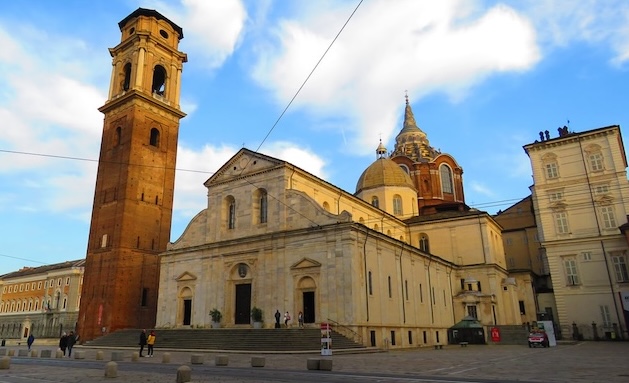 The Cathedral in Turin, Italy
The Cathedral in Turin, ItalyThe Egyptian Museum in Turin houses the world's second-largest collection of Egyptian artifacts after Cairo. You'll spend hours marveling at mummies, sarcophagi, and ancient treasures. The museum's modern presentation makes ancient history come alive in ways you never expected.
For art lovers, the Sabauda Gallery is a hidden gem featuring works by Van Dyck, Rubens, and other masters. The gallery is part of the Royal Museums complex, so you can easily combine it with your Royal Palace visit for a full day of cultural immersion.
One of the most unique things to visit in Turin is the underground tour of the city. Turin sits on a network of ancient tunnels and chambers that date back to Roman times. These guided tours reveal a completely different side of the city that most tourists never see.
What to visit in Turin
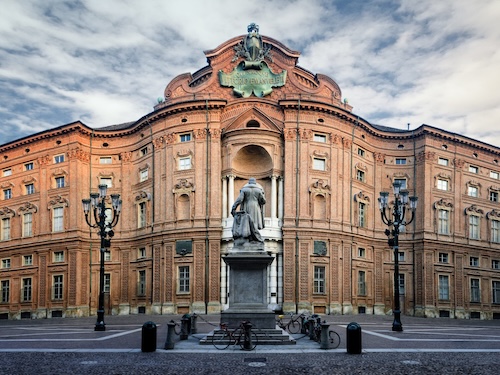 Palazzo Carignano Turin
Palazzo Carignano TurinThe Palazzo Carignano is where Italian unification began, and today it houses the Museum of the Risorgimento. The building itself is an architectural masterpiece with its distinctive curved baroque facade, and the museum tells the fascinating story of Italy's journey to becoming a unified nation.
Don't miss the beautiful Piazza San Carlo, often called Turin's "living room." This elegant square is surrounded by porticoed buildings and features twin baroque churches at one end. It's the perfect place to people-watch while enjoying an aperitivo at one of the many cafes.
The Quadrilatero Romano is Turin's oldest neighborhood, where ancient Roman streets still exist today. This area is packed with vintage shops, artisan workshops, and traditional restaurants. It's where locals go to find unique items and authentic Piedmontese cuisine.
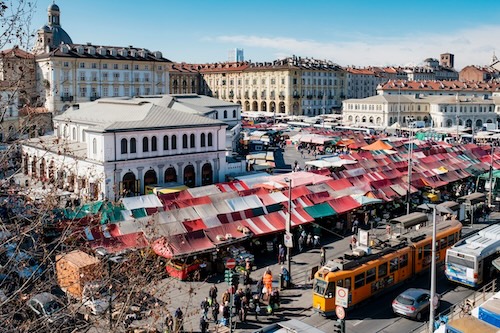 The Porto Palazzo market in Turin
The Porto Palazzo market in TurinFor a taste of local life, head to Porta Palazzo, one of Europe's largest open-air markets. Here you'll find everything from fresh produce to vintage clothing, and it's where Turin's diverse communities come together. The energy is infectious, and you'll get a real feel for the city's multicultural character.
Turin's cafe culture is legendary, and you absolutely must experience it. The city is considered the birthplace of Italian coffee culture, and historic cafes like Cafe Torino, Baratti & Milano, and Cafe San Carlo have been serving perfect espresso for over a century. These aren't just coffee shops – they're cultural institutions.
Speaking of coffee, Turin is also the chocolate capital of Italy. The city invented gianduiotto, a hazelnut chocolate that's become synonymous with Italian confectionery. Visit historic chocolate shops like Guido Gobino or Peyrano to taste chocolate that'll ruin you for anything else.
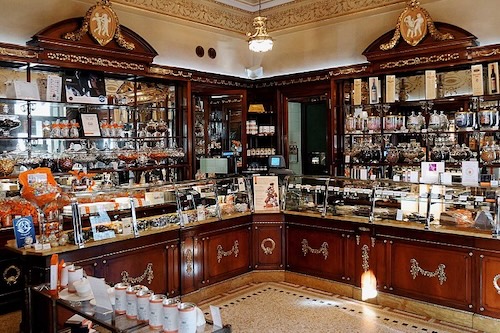 Guido Gobino
Guido GobinoWhat to see in Turin
The nightlife scene in Turin is vibrant and diverse. The Murazzi area along the Po River transforms into a buzzing nightlife district after dark, with bars, clubs, and restaurants lining the riverbank. It's where young locals go to unwind, and you'll find everything from craft cocktails to live music.
For a more sophisticated evening, head to the Quadrilatero Romano area, where wine bars and enotecas serve excellent Piedmontese wines alongside local delicacies. The region produces some of Italy's finest wines, including Barolo and Barbaresco, so this is your chance to taste them at their source.
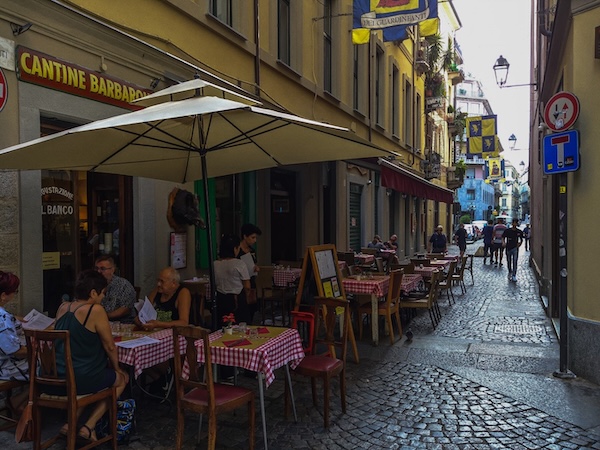 The Quadrilatero Romano area in Turin
The Quadrilatero Romano area in TurinShopping in Turin offers something for everyone. Via Roma is the main shopping street, lined with both international brands and local boutiques. For luxury shopping, the area around Via Lagrange and Via Carlo Alberto features high-end Italian fashion and design stores.
If you prefer unique finds, explore the vintage and antique shops in the San Salvario neighborhood. This trendy area has become a haven for young designers and artists, and you'll discover one-of-a-kind pieces that you won't find anywhere else.
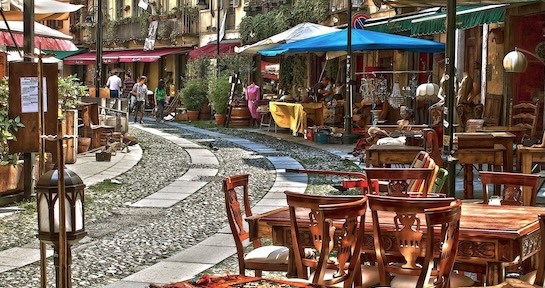 Gran Balon flea market in Turin
Gran Balon flea market in TurinThe Gran Balon flea market, held every second Sunday of the month, is a treasure hunter's paradise. You can find everything from antique furniture to vintage clothing, books, and collectibles. Even if you're not buying, it's fascinating to browse and soak up the atmosphere.
Turin's food scene deserves special mention because it's truly exceptional. The city is famous for its aperitivo culture – the evening ritual of drinks and small plates that bridges the gap between afternoon and dinner. Join locals at bars like Mood or Pastis for this quintessentially Turin experience.
For traditional Piedmontese cuisine, try restaurants like Consorzio or Tre Galline, where you can taste local specialties like agnolotti (stuffed pasta), vitello tonnato (veal with tuna sauce), and bagna cauda (warm anchovy dip). The region's cuisine is hearty and sophisticated, reflecting its position between Italy and France.
The Eataly concept was born in Turin, and visiting the original location is a must for food lovers. This isn't just a grocery store – it's a temple to Italian food culture where you can shop, eat, and learn about Italy's incredible culinary traditions all under one roof.
What to see in Turin
One of the insider tips that locals know is to take advantage of Turin's excellent public transportation system. The city has buses, trams, and a metro line that make getting around easy and affordable. A day pass gives you unlimited travel and is much more convenient than driving in the city center.
Another local secret is the beautiful Parco del Valentino along the Po River. This expansive park is perfect for jogging, picnicking, or just relaxing. The medieval village replica within the park and the stunning Valentino Castle make it feel like you've stepped into a fairy tale.
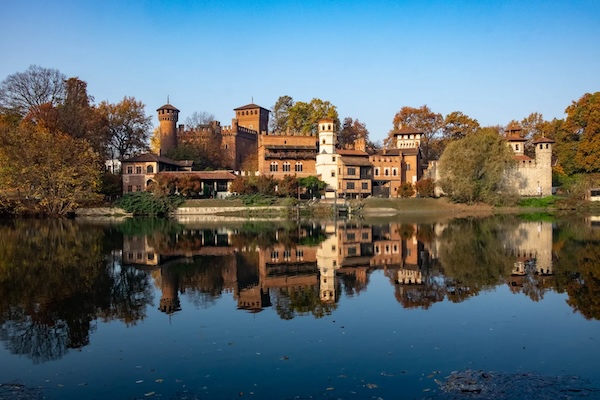 Parco del Valentino, Turin
Parco del Valentino, TurinIf you're visiting during winter, Turin transforms into a magical wonderland. The city hosted the 2006 Winter Olympics, and the nearby Alps offer world-class skiing just an hour away.
The Christmas markets in the city center are particularly charming, with local crafts and warm mulled wine.
Summer in Turin brings outdoor festivals, concerts in the parks, and the famous Estate Torinese program of cultural events. The city comes alive with street performers, outdoor cinema screenings, and festivals celebrating everything from music to food.
Things to see in Turin extend beyond the city limits too. Day trips to the stunning Sacra di San Michele monastery, perched dramatically on a mountaintop, or to the beautiful wine regions of Langhe and Roero are easily manageable and offer completely different perspectives on Piedmontese culture.
The best time to visit Turin is during spring (April-June) or fall (September-November) when the weather is pleasant and the city isn't crowded with summer tourists. However, each season offers its own charm, from winter's cozy cafe culture to summer's vibrant outdoor life.
What makes Turin truly special isn't just its individual attractions – it's the way the city seamlessly blends royal grandeur with everyday Italian life. You can admire priceless art in the morning, enjoy a perfect espresso at a historic cafe for lunch, and spend the evening discovering innovative restaurants in trendy neighborhoods. Turin offers an authentic Italian experience without the overwhelming crowds of more famous cities, making it the perfect destination for travelers who want to discover Italy's sophisticated, cultural side.






